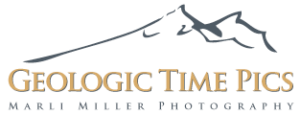Search for any geological feature below
–then click on the image to see a larger version in its correct format, a more detailed caption, and an ID number.

and please, drop me a line if you find this site useful!
*****
SOME POINTERS:
Photos typically include their locations, so you can use locations as keywords too. You get more hits with shorter words, and fewer hits as you become increasingly specific with increasing numbers of keywords. It’s best to use singular rather than plural (eg “volcano” instead of “volcanoes”).
As some words are included in others (“salt” within “basalt,” for example) you might want to be more specific to avoid getting a bunch of irrelevant photos.
Or you can just scroll down and see the most recently added photos… Enjoy!
Columbia River Gorge, Oregon-Washington

Columbia River Gorge, view upriver towards north edge of Oregon. (140710-11)
Download ImageWindsurfers in Columbia Gorge, WA-OR

Windsurfers in Columbia Gorge, WA-OR (140710-32)
Download ImageEroded volcanic neck, Oregon

Mt. Thielsen and volcaniclastic deposits, Oregon High Cascades. Mt. Thielson is the eroded neck of an extinct shield volcano. (140703-70)
Download ImageEroded volcanic neck, Oregon

Mt. Thielsen is the eroded neck of an extinct shield volcano. (140703-87)
Download ImageBase of Mt. Mazama, Oregon

View southward from Mt. Thielson to Crater Lake caldera and base of Mt. Mazama, Oregon Cascades. (140703-29)
Download ImageMeander bend and point bar, Oregon

Meander bend and point bar along North Umpqua River, Oregon. (140703-120)
Download ImageDiamond Lake and Mt. Bailey, Oregon

Oregon High Cascade range. Diamond Lake and Mt. Bailey, Oregon (140703-44)
Download Imagepillow basalt of Siletzia -an accreted terrane

pillow basalt of Siletzia -an accreted terrane in Oregon and Washington. This photo is near Roseburg, Oregon. (140703-116)
Download ImagePluvial lake –Lake Abert, Oregon

A pluvial lake in Oregon’s Basin and Range, Lake Abert periodically dries and floods, leaving behind a playa covered with evaporite minerals. (140621-79)
Download ImagePumice fragments

Pumice fragments, erupted during the caldera-forming eruption of Mt. Mazama, Oregon. (140622-13)
Download ImageAsh flow tuff, Oregon

Roadcut of Ash flow tuff, erupted during the caldera-forming eruption of Mt. Mazama 7700 years ago, Oregon. (140703-104)
Download ImagePumice fragments

Pumice fragments, erupted during the caldera-forming eruption of Mt. Mazama, Oregon. (140622-14)
Download ImageAsh flow tuff, Oregon (pan)

Roadcut of Ash flow tuff, erupted during the caldera-forming eruption of Mt. Mazama 7700 years ago, Oregon. (140703-101)
Download ImagePlaya Lake and fault scarp, Oregon

Lake Abert in SE Oregon borders a normal fault that uplifts Abert Rim. The pluvial lake periodically dries to leave behind salt deposits. (140621-64)
Download ImagePillow basalt and palagonite

Pillow basalt and palagonite–outcrop is about 5 meters from bottom to top. The palagonite forms as a weathering product of basaltic glass as it reacts with water–typically while the pillows are forming as the lava pours into a lake. (140621-305)
Download ImagePluvial lake –Lake Abert, Oregon

A pluvial lake in Oregon’s Basin and Range, Lake Abert periodically dries and floods, leaving behind a playa covered with evaporite minerals. (140621-69)
Download Image





You must be logged in to post a comment.